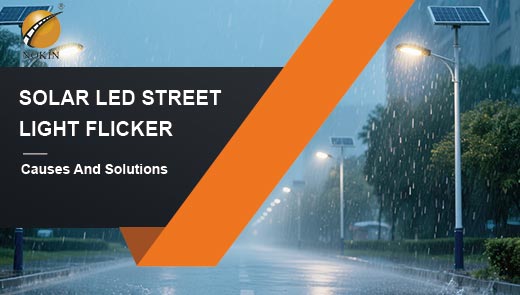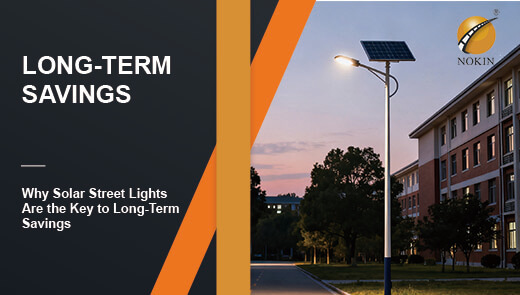5 Reasons To Power LED Light With Solar Panels
While the world is working hard to save energy and reduce emissions and respond to climate change, the combination of solar energy and LED lights is becoming a revolution in the field of lighting. Imagine that there is no need to lay complicated wires or worry about high electricity bills. Just rely on sunlight to make street lights as bright as before at night and keep the courtyard warm after dusk - this is not a science fiction scene, but a reality that solar LED street lights are realizing.
From environmental benefits to economic value, from technical adaptation to practical application, the combination of solar energy and LED lights has shown too many surprising advantages. This article will analyze the charm of this golden combination from all aspects, and take you to understand why more and more people choose to switch to solar LED street lighting, and how to avoid traps when buying.
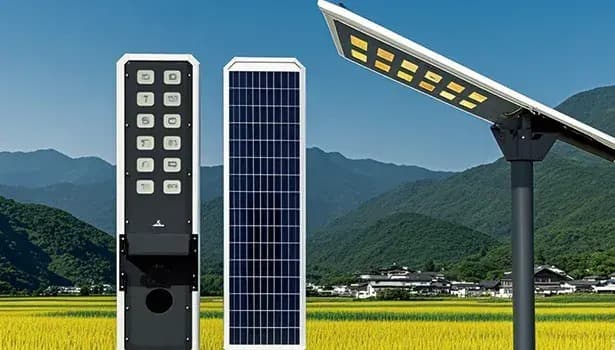
Why Switch to Solar?
The Environmental Value of Solar Energy
Solar energy is a safe and renewable energy source. Its use does not produce harmful greenhouse gases and can directly reduce the carbon footprint of human activities. Unlike traditional thermal power generation, solar power generation does not require water resources, which is undoubtedly a great boon for the earth where water resources are becoming increasingly scarce.
Lower Economic Threshold
In the past, high initial costs were the biggest obstacle to the popularization of solar energy. With the advancement of technology, the cost of solar infrastructure is constantly decreasing. More importantly, in order to promote the development of renewable energy, governments have introduced a wealth of tax incentives - from federal tax credits to state and local subsidies and rebates, these policies have greatly reduced the initial investment cost of solar systems, making them affordable for ordinary households and small and medium-sized enterprises.
Long-Term Benefits Far Exceed Short-Term Investment
From an economic perspective, the rationale for switching to solar energy lies not only in the reduction of initial costs, but also in the long-term energy cost savings. Once a solar system is installed, it means that you can use energy from the sun for free for decades to come, without having to worry about rising electricity bills. This "one-time investment, long-term benefits" model makes solar energy a wise choice for more and more people.
5 Reasons To Power LED Lights With Solar Panels
The combination of solar energy and LED lights is not a simple "1+1", but a perfect match that can produce a "1+1>2" effect. The following five reasons are enough to explain why they are a match made in heaven.
LED Lights are Perfect for Solar Panels
LED lights rely on direct current (DC) to operate, and solar panels also generate DC - this feature allows the two to be connected directly without the need for additional converters or ballasts.
If a converter is used, not only will it consume and waste electricity, but it may also require a larger solar panel to drive both the converter and the lamp, which increases costs and reduces efficiency. Solar panels and the batteries they charge are designed for DC power, so the entire system runs smoothly and power loss is extremely low.
In addition, solar panels and LED lights are small in size and flexible to install, and can be moved at any time according to needs. Whether it is a courtyard, terrace or remote outdoor area, it can be easily deployed and can work stably for a long time, allowing LED lights to efficiently use every kilowatt-hour of electricity generated by solar panels.
LED Lights are Energy-Saving and Efficient
LED lights are well-known for their energy-saving characteristics. LED lights generate almost no heat and have a very high energy conversion rate. This efficiency is directly reflected in the cost. For home scenarios, solar LED lights can significantly reduce electricity bills; for commercial scenarios, such as solar lighting in parking lots, its cost advantage is even more obvious.
Traditional parking lot lighting requires laying underground wires for each light pole, which involves a series of costs such as line procurement, trenching construction, and concrete repair. Solar LED street lights do not require these investments at all, saving all the costs of trenching, wiring, and post-maintenance.
Coupled with the tax incentives provided by the government, it can further offset the initial installation cost, and the cost savings over the long term are considerable.
LED Light Brightness Control
The brightness of LED lights is very flexible and can provide "just right" light according to the needs of different scenarios. Solar LED floodlights can emit bright white light close to natural light, making parking lots and courtyards at night as bright as day; they can also be transformed into small pink flashing lights to add atmosphere to festivals; they can also be used as spotlights to accurately illuminate corporate logos or artworks.
The color, irradiation direction, and beam shape of its light can all be precisely controlled through the design of the bulb to meet diverse lighting needs.
Solar Panels and LED Lights are Long-Term Maintenance-Free
The service life of solar LED lights is another major advantage over traditional lighting. Once installed, LED lights can last up to 22 years; based on 12 hours of lighting per day, the total duration can reach 50,000 to 100,000 hours, far exceeding incandescent, compact fluorescent and halogen lamps.
Solar panels can also last up to 25 years, with only a 20% loss in power generation efficiency. This "lifetime" feature means that once a solar LED lighting system is installed, you will hardly have to worry about replacing the equipment for more than 20 years.
This long life feature is particularly important for solar street lights installed in high, hard-to-reach or remote areas, which can greatly reduce maintenance costs and labor input.
Solar LED Street Lights Illuminate Remote Areas
In remote areas without power grid coverage, traditional lighting is almost impossible; but the emergence of solar LED street lights has enabled these areas to have stable lighting.
Solar panels can collect energy anywhere there is sunlight, while LED lights have extremely low energy consumption and do not require strong power support. The combination of the two perfectly solves the lighting problem in remote areas.
More importantly, this system does not require fixed installation and is extremely flexible. These portable lamps can illuminate temporary work sites or be used as emergency spotlights, truly realizing the "wherever light is needed, there is a solar LED lamp."

5 Reasons Why LEDs are The Best Choice for Solar Lighting
It is no accident that LED lamps have become the "best partner" in solar lighting systems. Its five major characteristics make it a perfect match with solar energy.
Maximizing Solar Energy Utilization
LED lamps are currently the most energy-efficient lighting equipment. Data shows that 90% of the electrical energy of a 50W halogen lamp will be converted into heat, and only 10% is used for light emission; while LED lamps can produce 85% of the light with only 15% of the energy.
This high efficiency is crucial to solar lighting - it means that LED lamps only need to consume less solar energy to achieve the ideal lighting effect, thereby reducing the requirements for solar panel power and battery capacity, and reducing the cost of the entire system. This is also one of the core reasons for the continued growth in demand for LED lamps in recent years.
Wide Range of Scenarios
Compared with traditional lamps, solar LED street lights are more compact and more beautiful in design. This small size and diverse design make it easy to fit into various scenarios - from urban balconies to rural courtyards, from commercial squares to private gardens, you can find suitable styles. For solar lighting enthusiasts, the diversity of solar LED street lights gives them more room for personalized choices.
Reduce Replacement Frequency
The service life of LED lights far exceeds that of traditional lamps: its life span can reach 50,000 hours, which is 30 times that of incandescent lamps and 5 times that of compact fluorescent lamps (CFLs).
However, the life of LED lights is also affected by many factors. When purchasing, you need to pay attention to the quality of accessories, the overall process of the product, and the use environment (such as temperature, humidity, etc.) to ensure that it can achieve the expected service life. But even so, its average life is enough for users to not worry about replacement for a long time.
Adapt to Complex Environments
The durability of LED lights is its key advantage in "outdoor survival". It is not made of glass, and its internal structure is hollow, which can withstand all kinds of weather conditions - whether it is strong winds and rainstorms, high temperatures, or low temperatures, it can work stably.
At the same time, LED lights are highly resistant to impact and vibration, and can withstand various influences of the external environment. This means that once installed, users have almost no need to worry about maintenance and repair issues, which is particularly suitable for outdoor unattended scenes.
Accurately Meet Lighting Needs
Unlike traditional lamps that emit light in all directions, LED lights usually emit light in one direction. This directional light emission characteristic makes it perform well in task lighting - it can provide uniform and concentrated light for specific surfaces.
High-quality LED lamps can also adjust the angle of light, allowing users to accurately control the spread of light according to needs, further improving lighting efficiency.
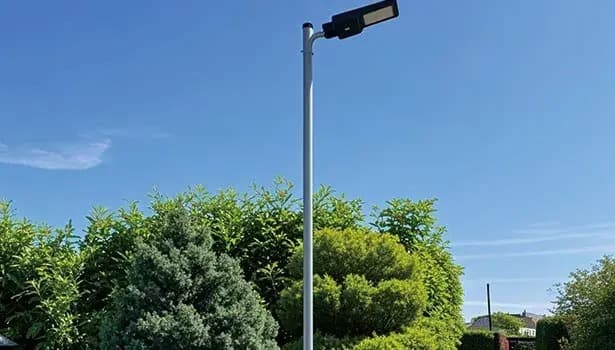
5 Benefits to Solar Street Lights
Easy Installation
The installation process of solar street lights is extremely simple, without complicated wiring and electrical work. Its core components - solar panels, lithium batteries, controllers and LED lights - are usually integrated into a device, and when installing, you only need to fix this device on a lamp pole or other flat surface.
In contrast, traditional street lights require laying long cables, which involves a series of tedious processes such as trenching, burying cables, and wiring. Not only does the construction period take a long time, but it may also damage the road surface and greening. The "cordless" design of solar street lights greatly reduces the difficulty and time cost of construction.
More Cost Advantages in the Whole Life Cycle
From the perspective of hardware and installation costs alone, solar street lights have certain competitiveness; and from the perspective of the whole life cycle cost (that is, all costs from purchase to scrapping), its advantages are even more obvious.
In addition to the initial equipment and installation costs, traditional street lights also need to bear long-term electricity bills, cable maintenance fees, line repair fees, etc.; solar street lights do not need to pay electricity bills, and there are no cable-related maintenance costs. The only cost is mainly the initial investment and very little later maintenance costs.
In the long run, the total cost of solar street lights will be much lower than that of traditional street lights, saving a lot of expenses for the government and related institutions.
Low Maintenance Cost
Solar street lights require very little maintenance, which can be called a "worry-free choice". After proper installation, it is usually only necessary to clean the solar panels and optical components regularly. Many solar street lights use self-cleaning glass for their solar panels, and the installation angle is optimized, so rainwater can naturally wash away dust on the surface, further reducing the frequency of cleaning.
Green and Environmentally Friendly
Traditional grid-powered street lights rely on thermal power generation, which is one of the important sources of carbon emissions, accounting for about 30% of the total emissions of local governments. It not only consumes a lot of energy, but also burdens the environment.
Solar street lights rely entirely on sunlight for power generation, with zero carbon emissions during operation, and are environmentally friendly. Some brands of solar street lights also use precise light cutoff design and 3000K warm light LEDs, which meet dark sky standards, can reduce light pollution and sky glow, and are more friendly to surrounding residents and natural ecology.
At the same time, solar street lights have a wide lighting coverage, and the LED lamps of the new system can also reduce glare and improve lighting comfort.
High Reliability
Modern smart solar street lights have been verified in a large number of actual scenarios and are extremely reliable. It does not rely on the power grid, so it will not be affected by problems such as power outages and voltage instability-this advantage is particularly important at a time when power grid failures are frequent.
Traditional street lights may cause lighting interruption in large areas if there is a problem with the power grid; solar street lights use independent power supply, and problems with a single lamp will only affect itself and will not affect other areas.
In addition, many solar street lights are equipped with network-based monitoring and control systems. Workers can remotely check the status of the lamps through security permissions anywhere, and promptly discover and solve problems, further improving their reliability.
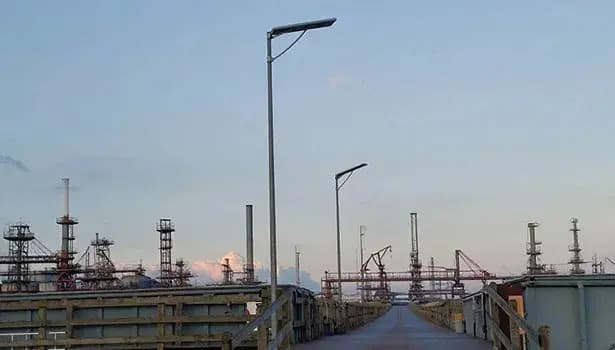
7 Mistakes To Avoid When Buying Solar Lights
Thinking that "LED quantity = LED power"
When buying solar lights, many people use the number of LEDs as the core indicator for judging power, thinking that the more LEDs, the greater the power. This is a typical mistake.
In fact, the power of a single LED chip varies greatly, ranging from 0.2 watts to 5 watts or even higher, and the price of LED chips of different brands and qualities varies greatly (ranging from US$0.002 to US$0.2).
Therefore, the number of LEDs can neither represent the actual power of solar lights nor reflect their cost. In some solar street light biddings (such as the Philippines), it is often required that the number of LEDs should not be less than a certain value, which is actually a misunderstanding of product parameters.
Confusing "LED power" and "Brightness"
The unit of brightness is lumen (lm), not power (watt). The key to judging brightness is luminous efficiency (i.e., lumens per watt), not power.
The luminous efficiency of traditional incandescent lamps is only 12-24 lumens/watt, and that of compact fluorescent lamps is 50-60 lumens/watt, while the luminous efficiency of LED lamps is much higher - starting from 2020, some LED chips on the market have exceeded 200 lumens/watt, and some are about 130 lumens/watt. Therefore, when purchasing, you must pay attention to the number of lumens, not just the power.
Judging the Quality of the Charge Controller Only by "Current"
Many people believe that the current of the charge controller (such as 10A, 15A) is the core standard for judging its quality, which is not accurate.
The current size can only reflect whether the controller can drive a solar panel with sufficient power at a specific voltage, and the key to its quality lies in the technical accumulation in actual projects - including the debugging and updating of hardware and software in the process of solving actual problems.
The charge controller accounts for a small proportion of the cost of outdoor solar lights, but it has a great impact on the stability of the system. When purchasing, you need to pay attention to the brand's technical strength and actual project experience, rather than just looking at the current parameters.
Believe that "Solar Panel Size = Power"
In order to reduce costs, some manufacturers will "play tricks" on solar panels: reduce the number of solar cells, but keep the panel size unchanged; or use Class B or Class C solar cells (extremely short life), or even mix broken chips in the panel.
Therefore, the size of the solar panel cannot be used as a basis for judging power. For solar street light projects, it is recommended to choose monocrystalline silicon solar panels instead of polycrystalline silicon solar panels - because monocrystalline silicon solar panels have higher power generation efficiency on cloudy days (this is the key to whether street lights can work normally on cloudy days), and the size is 20% smaller than polycrystalline silicon at the same power, which is more conducive to installation and safety.
Battery Capacity Only Looks at "AH"
The correct way to calculate battery capacity is "voltage × ampere-hour", and only looking at ampere-hour is not comprehensive. For example, the capacity of a 12V 30AH battery is 4 times that of a 3.2V 30AH battery.
Most of the popular low-power solar floodlights and wall lights on the market use 3.2V battery systems, but low-voltage systems cannot support high-power solar lights - because the lower the voltage, the greater the current required to achieve the same power, which will make the wires thicker and easily damage the charging controller.
Mistakenly Thinking that "LED Chips Are Expensive"
The core components of solar lights include solar panels, batteries, charging controllers and light sources(LED). Among them, LED accounts for only 5%-10% of the total cost, which is not the most expensive part.
Choosing LED chips with high luminous efficiency (such as 0.8W chips that can reach more than 220 lumens/watt) can achieve the same brightness with lower power, thereby reducing the requirements for solar panel power and battery capacity, and reducing the cost of the entire system. For example, a 6000-lumen solar street light using a 150-lumen/watt LED requires a 70-watt solar panel and a 12V 30AH battery; while using a 200-lumen/watt LED, only a 30-watt solar panel and a 12V 22AH battery are required, and the total cost can be reduced by about 15%.
Misunderstanding that "Good Samples = Good Quality of Mass Products"
The sample solar lamp may perform well in the short term, but in the mass order, if the quality of the controller or battery is not up to standard, the failure rate of the product will increase significantly. There are three key points to judge the quality of solar lamps: brightness (lumens), lighting time at night and on cloudy days, and service life.
The core component that determines the life of solar lamps is the lithium battery. If the battery capacity is insufficient or the quality is poor, the service life of the lamp may not exceed one year. In many cases, the sample can work normally in the first few months, but after a year, its lighting time will drop significantly, exposing quality problems. Therefore, when purchasing, you cannot make a decision based on the performance of the sample alone. You need to have a deep understanding of the brand's quality control system and the quality assurance of the battery and controller.
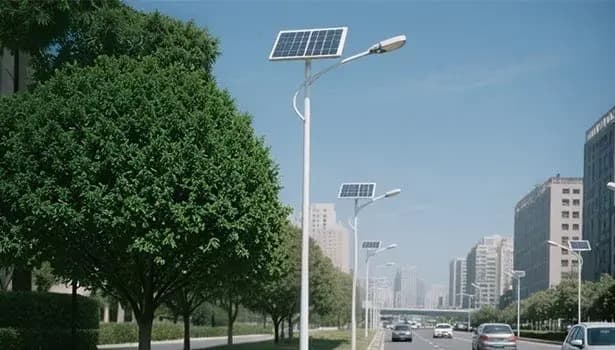
Embrace Solar LED lighting and Start A Green Future
From environmental protection to economy, from technical adaptation to practical application, the combination of solar energy and LED lights has shown incomparable advantages. Whether it is home lighting, commercial scenes or public facilities, solar LED lights can provide efficient, reliable and low-cost solutions.
Turning to solar energy and choosing LED lights is not only saving money for the present, but also contributing to the sustainable development of the future. Of course, in the purchase process, you should also avoid common misunderstandings and choose truly high-quality products.
I believe that in the near future, with the further advancement of technology and the continuous decline in costs, solar LED lights will enter more corners, making "sunlight illuminates life" a more common reality. Now is the best time to embrace this green lighting revolution.


